Wheel hub motor technology, also known as wheel-mounted motor technology, is characterized by the integration of power, transmission and braking devices into the hub, thus greatly simplifying the mechanical part of the electric vehicle.
Wheel motor technology is not new. As early as 1900, Porsche first produced electric vehicles with front wheel wheel motors. In the 1970s, this technology was applied in mining trucks and other fields. For the hub motors used in passenger cars, Japanese manufacturers have carried out earlier research and development of this technology and are currently in a leading position. International auto giants including General Motors and Toyota have also been involved in this technology. At present, domestic automakers have begun to develop this technology. The Riichon X1 extended-range electric vehicle exhibited at the 2011 Shanghai Auto Show has adopted wheel hub motor technology.
This article further elaborates on hub motor technology through an easy-to-understand graphical approach.
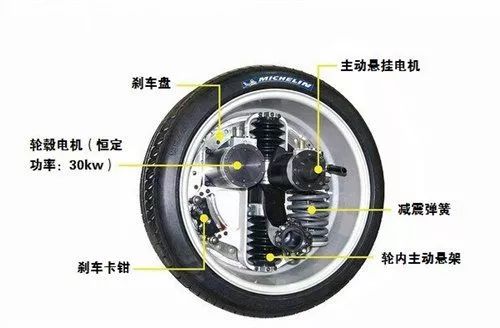

The hub motor drive system is mainly divided into two types according to the rotor type of the motor: an inner rotor type and an outer rotor type. The outer rotor type adopts low-speed outer rotor motor, the maximum speed of the motor is 1000-1500r/min, no deceleration device, the rotation speed of the wheel is the same as that of the motor, and the inner rotor type adopts high-speed inner rotor motor and reducer with fixed transmission ratio. In order to achieve higher power density, the motor speed can be as high as 10000r/min. With the advent of more compact planetary gear reducers, the inner rotor hub motor is more competitive in terms of power density than the low speed outer rotor.
1 type of hub motor
Brushed motors and brushless motors have been phased out due to their low efficiency.
There are sensors and sensors, and some electric bicycles must be stepped on to drive because there are no sensors inside. It directly measures the motor's back electromotive force and knows the position of the rotor for commutation. Before starting, you must use the sensor to know the relative position of the rotor and stator.
Gears and gearless, motors that reduce the starting current to prevent demagnetization of the magnet must use reduction gears to increase starting efficiency. After the magnetic steel material is improved, it is not necessary to have gears.
There is a clutch mechanism and a clutch-free mechanism. An electric bicycle using a hub motor has electromagnetic resistance without electric riding, and the clutch mechanism can reduce electromagnetic resistance. It is also possible to use a clutch mechanism to adjust the gear speed ratio. Zhu Musong's magnetic manual gear clutch high-speed brushless hub motor uses the motor magnetic reset to achieve manual gear meshing.
High-speed and low-speed magnetic manual gear clutch high-speed brushless hub motor is light in weight, low-speed brushless hub motor has simple structure, low noise and high power. Other electric vehicle hub drive motors, etc.
2 hub motor construction
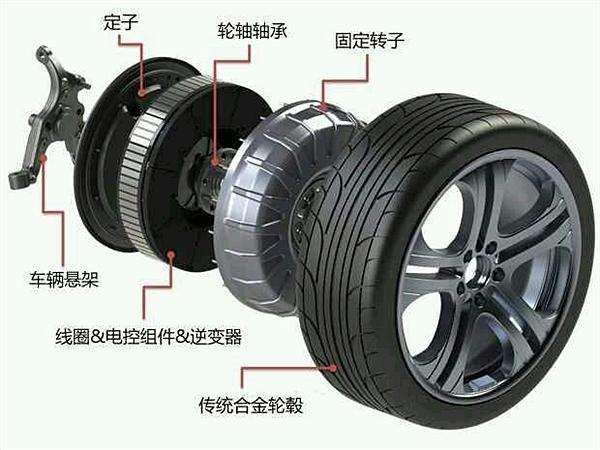
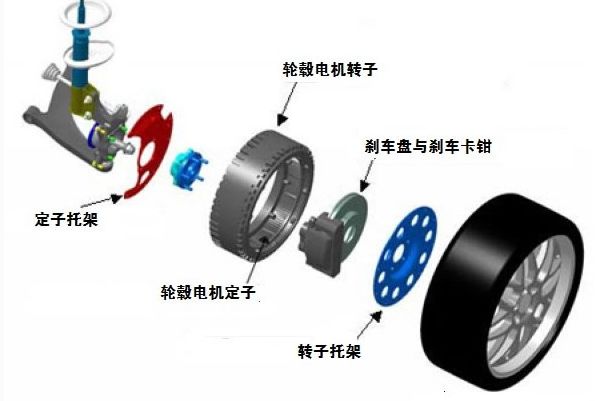
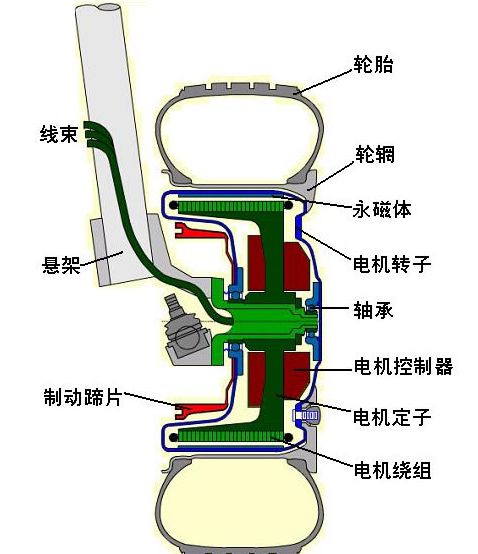
The principle of 3 hub motor
Before the brushless motor starts, it is necessary to use the sensor to know the relative position of the rotor and the stator. The non-inductive motor directly measures the back electromotive force of the motor and knows the position of the rotor. The controller drives the power tube for commutation.
Although the memory can record the relative position of the stator and the rotor, it is impossible to understand the waveform of the motor winding back electromotive force for a very slow rotating system. When the motor reaches a certain speed, the peaks and valleys of the motor are limited by a certain angle, and the motor is turned off when braking. Therefore, a hub motor using a magnetic sensor is the mainstream. The principle of the hub motor is that the red magnetic steel rotor is in the dead angle position, and the winding above the blue magnetic steel rotor is energized to get out of the dead angle. The motor shown in Figure 2 has no dead angle. As long as the position of the rotor is known, it knows how to drive the power tube.
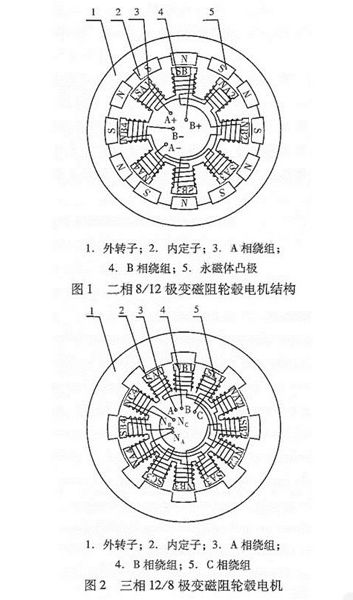
The motor shown in Figure 1 and Figure 2 looks like a linear motor. The winding power is like using food to lure the dice (magnet steel) to keep running, but it always keeps a distance. It is more powerful and heavier. The structure is simple and the noise is low.
5 magnetic manual gear clutch high speed brushless hub motor
Use three large and thin 2-mode steel gears to reduce the required power. When the vehicle needs to slide, the shaft, the piston and the hook of the shaft clutch transmission are pulled by the eccentric clutch handle, so that the outer gear end cover of the motor gear is displaced, and the motor gear is separated from the transmission gear. Do not use the motor magnetic reset to achieve manual gear engagement when sliding, the clutch mechanism is simple, and the overrunning clutch is omitted.
Heat dissipation, in order to prevent the motor from transferring heat to the tire, there must be a certain distance between the two, and some are separated by wires.
6 hub motor advantages
Omit a large number of transmission components to make the vehicle structure simpler
The application of the hub motor can greatly simplify the structure of the vehicle, and the conventional clutch, gearbox and drive shaft will no longer exist. This also means saving more space.
For conventional vehicles, clutches, transmissions, drive shafts, differentials and even transfer cases are essential, and these components are not only lightweight, but also make the structure of the vehicle more complex, and also require regular maintenance and The problem of failure rate. But the hub motor solves this problem very well. In addition to a simpler structure, a vehicle driven by a hub motor can achieve better space utilization and a higher transmission efficiency. A variety of complex drive methods are available, and since each tire is individually driven, it is very easy to implement a four-wheel drive version. The application of the hub motor technology can even achieve the purpose of in-situ steering by reversing the wheels on both sides. In addition, for some special vehicles, such as the number of wheels, the wheel motor is also a very good solution.
Because the hub motor has the characteristics of a single wheel independent drive, it can be easily implemented in either the front, rear or four-wheel drive versions. Full-time four-wheel drive is very easy to implement on a wheel-motor-driven vehicle. At the same time, the hub motor can realize the differential steering of the similar tracked vehicle through different speeds of the left and right wheels or even reverse, greatly reducing the turning radius of the vehicle, and in almost special circumstances can realize the in-situ steering (but at this time, the steering mechanism of the vehicle and Tire wear is large) and is valuable for special vehicles.
It is convenient to adopt a variety of new energy vehicle technologies, and many new energy vehicles are powered by electric drives, so the hub motor drive also comes in handy. Whether it is a pure electric or fuel cell electric vehicle, or an extended-range electric vehicle, the hub motor can be used as the main driving force; even for the hybrid model, the hub motor can be used as a boost for starting or accelerating. A multi-purpose machine. At the same time, many technologies for new energy vehicles, such as brake energy recovery (ie, regenerative braking), can also be easily implemented on in-wheel motor-driven models.
7 shortcomings of the hub motor
Increasing the unsprung mass and the moment of inertia of the hub affects the handling of the vehicle. The hub motor is to be installed in the rim, which makes the unsprung mass of the vehicle increase. Also based on the hub motor produced by Protean, the mass of a single motor is 30kg.
For ordinary civilian vehicles, some relatively lightweight materials such as aluminum alloys are often used to make the suspended components to reduce the unsprung mass and improve the response speed of the suspension. However, the hub motor just increases the unsprung mass to a large extent, and also increases the moment of inertia of the hub, which is detrimental to the handling performance of the vehicle. However, considering that electric vehicles are mostly limited to travel rather than pursuing power performance, this is not the biggest flaw.
The electric braking performance is limited. It takes a lot of energy to maintain the braking system. The electric eddy current braking capacity is not high. It needs to work together with the mechanical braking system on the heavy-duty vehicle. For electric vehicles, higher energy is required to achieve higher braking performance, which affects the cruising range to some extent.
Many of today's conventional power commercial vehicles have been equipped with auxiliary reduction gears that utilize the principle of eddy current braking (ie, resistance braking), such as electric retarders used in many trucks. Due to the relationship between energy and electric vehicles, electric braking is also the first choice. However, for the vehicle driven by the hub motor, because the electric braking capacity of the hub motor system is small and cannot meet the requirements of the braking performance of the whole vehicle, additional mechanical system is required. Dynamic system, but for ordinary electric passenger cars, without the vacuum pump driven by the traditional internal combustion engine, the electric vacuum pump is needed to provide the brake boost, but it means that there is more energy consumption, even if the regenerative braking can recover some energy, If the effectiveness of the braking system is to be ensured, the energy consumed by the braking system is also one of the important factors affecting the cruising range of the electric vehicle.
In addition, the working environment of the hub motor is harsh, facing the influence of water, dust, etc., and also has high requirements in terms of sealing. At the same time, it is also necessary to separately consider the heat dissipation problem for the hub motor.
8 summary
The technology of the hub motor does have a good advantage. It not only saves a lot of space, but also improves the transmission efficiency. It is a good direction for the development of new energy vehicles. But at present, there are still many problems in this technology, such as the wheel working environment is too complicated, the durability is not guaranteed, there are high-speed vibration, noise and optimization of braking and suspension, etc. These are the steps that engineers need. Step by step.
Moving Walk,Elevator Escalator,Automatic Travelator,Automatic Escalator System
XI'AN TYPICAL ELEVATOR CO., LTD , https://www.chinaxiantypical.com
